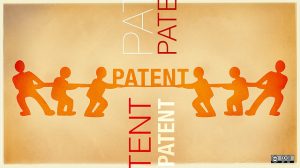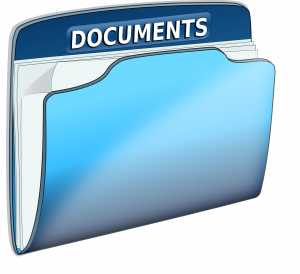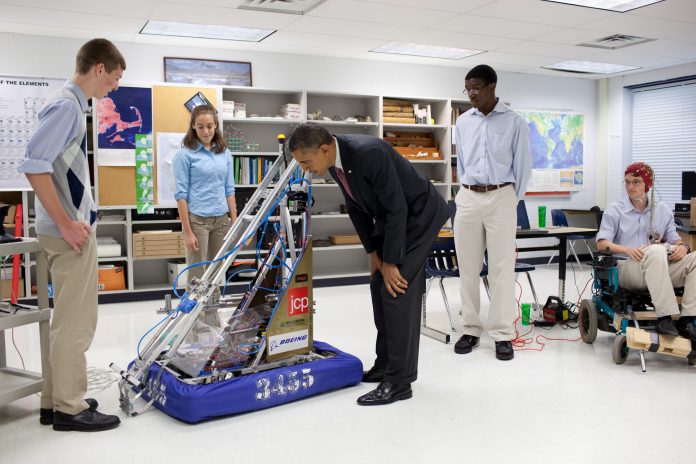This article is written by Monika Verma, Student of Mahatma Jyotiba Phule Rohilkhand University, Bareilly. Here she has discussed on Law of Patent.
The human mind is a hub of creativity and his creative work is protected through several measures. There are several forms of protecting the creative activity which is a definite measure of encouragement for innovations, one such protection is Patenting.
As we know Patents are basically, monopolistic rights granted by the Government of the country to the owner of the invention in any field whatsoever, to make, use, manufacture and market the invention, provided the invention satisfies certain conditions stipulated in the law and such rights are granted for a limited period of time (for 20 years).

Patentability: Applying For Patent
As we know that not every invention get patented, Patent is granted to the owner of the Patent when his/her invention satisfies the conditions for Patentability. Such conditions are as follows:
- Novelty
- Inventive step or non-obviousness
- Industrial Application
Section 3 and Section 4 deals with the list of exceptions that do not fall under the invention and hence are non-patentable.
Procedure for Grant of Patent
Persons entitled to apply for patents
—(1) Subject to the arrangements contained in section 134, an application for a patent for an invention might be made by any of the accompanying persons, in other words,—
(a) By any individual professing to be the valid and first creator of the invention;
(b) By any individual being the assignee of the individual professing to be the valid and first innovator in regard of the privilege to make such an application;
(c) By the legitimate agent of any deceased individual who is preceding his demise and is qualified to make such an application.
(2) An application under sub-section (1) might be made by any of the persons alluded to in that either alone or mutually with some other individual.
Filing of Application- Provisional/Complete: The Patent Application should be filed in form 1 accompanied by either provisional or complete specification in form 2 (If an applicant is not ready with the complete invention and need some more time for it then filing for the provisional application is recommended).
Publication of Application: The publication of the application is made after the expiry of 18 months from the priority date and no fees are required by the inventor. A prior- request for publication can be made (Rule 24A) under section 11A(2) in form 9 (optional step).
Request for Examination(REF): The request for examination to examine the patent application is made in form 18 (including fee) within 48 months from the filing date by the applicant.
Examination issue of First Examination Report(FER): The controller sends the patent application to the examiner who checks for patentability as per the patentability criteria and creates the first examination report (FER).
Any objection raised regarding the patentability requirements during examining the patent application has to have complied within 12 months.
Grant of Patent: Once the application meets all the requirements of patentability, the patent is granted to the inventor with the seal form patent office and is notified in the journal from time to time.
Opposition: Section 25 of the Act deals with the opposition to grant of patents and are of two types: Pre Grant (before the patent is granted) and Post Grant (after 1 year of grant of the patent). The opposition can be filed by anyone interested in the field of the invention in form 7 with the prescribed fee within 12 months from the date of publication of the patent.
Grounds of Opposition to Patent
- Obtained wrongly or fraudulently.
- The invention has been already published and known.
- Not involved in any of the inventive step.
- Not completed within 12 months.
- No clear and explicit description of the invention.
- Not considered an invention based on the subject matters for the invention.
Types of Patent Application
There are four types of Patent Application namely:
Provisional Application: This application is filed when the inventor is not quite ready with the invention and needs more time for the development of his invention and also don’t want to lose the priority date. After 12 months of filing the provisional application, the complete application should be filed otherwise the patent application will not be considered. The provisional certificate may or may not have claimed.
Complete Application: Filing of the complete application, describes that the invention is complete. The complete application have claims.
Elements of complete application:
-
Description of invention
-
The best method of performing
-
Claims
-
Abstract
Convention Application: When an inventor or an applicant files the patent application in Indian Patent Office claiming for a priority date based on a similar application filed in convention countries, such applications are convention application.
Patent Cooperation Treaty (PCT) – International Application: A PCT application is an international application governed by the Patent Cooperation Treaty further administered by the World Intellectual Property Rights (WIPO).
Divisional Application: When an applicant feels that he has come across an invention which is a slight modification of the invention for which he has already applied for or has obtained the patent, the applicant can go for the patent of addition if the invention does not involve a substantial inventive step. There is no need to pay the separate renewal fee for the patent of addition during the term of the main patent and it expires along with the main patent.
Patent of Addition: when application made by applicant claims more than one invention, the applicant on his own files two or more applications, as applicable for each of the inventions. This type of application, divided out of the parent one, is called a Divisional Application. The priority date for all the divisional applications will be the same as that claimed by the Parent Application.

Documents Required For Patent Application
-
- Application for grant of the patent in form 1
- Proof of right to file the application from the inventor.
- Provisional/complete specification in form -2
- Statement and undertaking under section 8 in Form 3
- Declaration as to inventorship
- Power of authority in form 26
- Applicant’s signature and an appropriate date
- If application pertains to a biological material obtained from India, submission of the permission from the National Biodiversity Authority
- Request for Examination- Form 18
- Requisite Statutory Fees
Rights of Patentee
Section 48 of the Act deals with the rights of conferring upon the patentee after the grant of the Patent.
- Exclusion of the third party to use, sell, or import the patented product without the patentee’s consent.
- Exclusion of the third party from using, selling or importing the patented product (if the subject matter is the process) without the patentee’s consent.
Infringement and Remedies for patent
Infringement of patent refers to the violation of the rights of the patent holder that is whenever a person exercises the rights of the patent holder without the patent owner’s consent, he causes infringement.
Types of Patent Infringement:
-
Direct Infringement – Directly selling, marketing, or using commercially, any product which is substantially close to the patented product without the consent of the patentee.
-
Indirect Infringement- Deceitful and accidental patent infringement in any incident is an indirect infringement.
-
Contributory infringement- If the person knowingly infringes the rights of the patent holder, it refers to contributory infringement.
Some acts that would not lead to infringement are as follows.
- Government use: As per Section 100 a patented invention can be used by the central government for its own use and as per section 47, the patented invention can be imported by the government.
- Exemption on experiments and research: the use of a patented invention for experiments and teaching purposes does not come under infringement.
- Patented inventions on drugs and medicines can be imported by the government.
- Any patented invention on foreign vessel/ aircraft/ vehicle comes to India is not an infringement.
Filing suits for infringement
Section 104 of the Patent Act, 1970 deals with the filing of the suit by the patentee against the infringement. The patentee can file a suit in a district court or directly in the high court. Suit for patent infringement can be filed after the grant of patent yet the patentee can also claim for damages committed between the publication of patent application to the grant of the patent.
The burden of proof is on the patentee after the grant of the patent but if the invention is a process than the burden to prove for infringement lies on the defendant.
Remedies for patent
Section 108 deals with relief or remedies against the infringement.
Injunction
The injunction is the most common form of Remedy granted in Patent infringement proceedings. The injunction is the order of the court restricting a person from beginning or continuing a course of action (infringing in this case) threatening or invading legal rights of a person.
Types of Injunction
There are two types of an injunction-
- Interim Injunction
- Permanent Injunction
Interim Injunction restricts the person temporarily from doing act and is granted before the full-fledged trial.
Permanent Injunction, on the other hand, restrains a person from doing a specified act and can be granted after the full-fledged trial.
Injunctions are preventive, prohibitive or restrictive that is restricting someone from doing a specified act or mandatory that is, they compel or orders a person to do something.
The plaintiff can obtain interlocutory order in the form of a temporary injunction whenever a case of patent infringement occurs from the court by proving the following facts:
- The prima facie case of infringement
- The balance of convenience in his favour
- If the injunction is not granted he/she shall suffer irreparable damage.
Damages and account of profit
If the suit is in favour of the plaintiff, the court can award either damages or directs the defendant to render an account of profits but not both.
Exceptions and Limitations of Patent in India
Types of Exceptions & Limitations
Article 30 of TRIPS (Trade-Related Aspects of Intellectual Property Rights) allows for limited exceptions to the exclusive rights conferred by a patent.
-
Exception on Non-Commercial use
The exclusive rights conferred by a patent does not allow the private or commercial activity.
The Government has the power to grant a license, known as Compulsory License (CL) , to a third party to use the patented invention (when the patentee is not using the invention for profit) so as to restrict the rights of the patentee for the purpose of preventing the abuse/ misuse of the rights by the property holder and to prevent the negative effect of such action on the public.
When the patented invention is not commercialized in India or the invention is not available to the public at reasonable prices or the invention is not manufactured in requisite amount, then the government grant such license.
-
Exception on Experimental / Scientific Research
Section 47 of the Act subsection 3 deals with the exception on experimental and scientific use of Patented invention, the grant of a patent is subject to the condition that any product or process, in respect of which the patent is granted, may be made or used by any person for the purpose merely of experiment or research including the imparting of instructions to the students.
This form of exception grants third parties to carry out experiments and scientific processes for teaching students without infringing the rights of the patent holder.
-
Exception on Regulatory use or Private use
Section 107A of the Indian Patent (Amendment) Act, 2005 deals with the exception of regulatory and private use also referred as bolar Provision, this exemption allows the manufacturers of generic drugs to undertake steps reasonably related to the development and submission of information required for obtaining marketing approval anywhere in the world in respect of a patented product without the consent of the patentee.
This provision allows the generic producers to market and manufacture their goods before the expiration of the term of the patent. Bolar Provision has been upheld as conforming to the TRIPS agreement and is used in several countries to advance science and technology.
-
Exception on Foreign Vessels, Aircraft or Land Vehicles
Section 49 the Indian Patents Act deals with the said exception, when the foreign vessels, aircraft, or land vehicles accidentally or temporarily comes to India, the patent rights are not infringed when the patented invention is used exclusively for the needs of foreign vessels, aircraft, or land vehicles and other accessories.
Conclusion
Patenting in India has protected the intellectual property of many innovators and has been useful in the growth of commerce and technology in India. One has to go through a certain process for the grant of Patent. Grant of Patent confers monopolistic rights upon the Patentee excluding the third party to sell, use, manufacture or import of the patented product without the consent of the patentee. If someone tries to use, sell, manufacture or import such patented products leading to the infringement of the rights of the patentee, the patentee can sue the person.
To know more about Guide to IPR and Patent Law in India, Please Click here.
 Serato DJ Crack 2025Serato DJ PRO Crack
Serato DJ Crack 2025Serato DJ PRO Crack











 Allow notifications
Allow notifications



